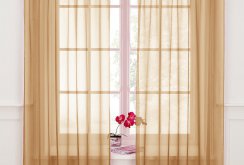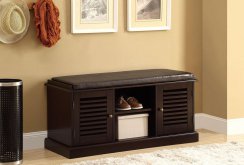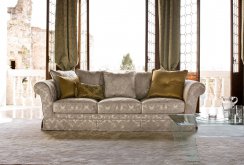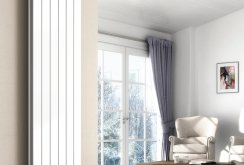 Gypsum plaster in the interior: new features of the classics (20 photos)
Gypsum plaster in the interior: new features of the classics (20 photos)
Gypsum plaster is used for leveling walls and ceilings. It is used in residential and commercial construction, it is notable for its affordable price, practicality and ease of application. It can be applied both manually and with the help of special professional equipment.
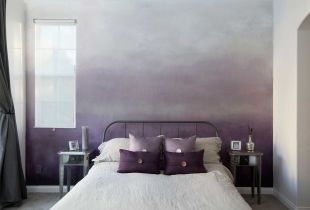 Acrylic plaster: affordable beauty and durability (20 photos)
Acrylic plaster: affordable beauty and durability (20 photos)
Decoration of housing has always interested a person: everyone wants to live in a beautiful house or apartment. It is not surprising that finishing materials are constantly being improved. One of the most interesting and affordable today is acrylic plaster.
 American Plaster: essence, application possibilities and application technology (20 photos)
American Plaster: essence, application possibilities and application technology (20 photos)
Universal "American" plaster has optimal performance properties and does not create difficulties in the application process. Important factors of her choice are composition and purpose.
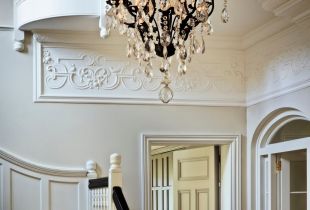 Warm plaster: on guard of warmth and comfort (24 photos)
Warm plaster: on guard of warmth and comfort (24 photos)
Warm plaster is an innovative, easy to apply and at the same time inexpensive composition that allows you to insulate walls and facades from any source material with your own forces.
 Advantages and possibilities of using Marmorino plaster (21 photos)
Advantages and possibilities of using Marmorino plaster (21 photos)
Marmorino plaster is an effective finishing mixture, which after application forms a dense wear-resistant layer on the surface with impressive aesthetic and operational characteristics.
 Decorative plaster in the corridor: available application techniques (20 photos)
Decorative plaster in the corridor: available application techniques (20 photos)
Decorative plaster is an excellent solution for the corridor. With its help, you can realize various design options.
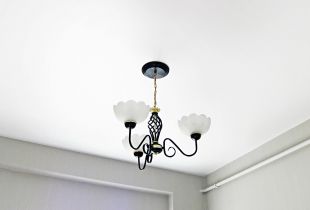 DIY whitewashing of the ceiling: technology features
DIY whitewashing of the ceiling: technology features
Do-it-yourself whitewashing of the ceiling is a great way to spend time with benefit. It’s quite easy for a wallet to have the opportunity to enjoy the result of their own efforts - there are many advantages. However, keep in mind that this is a technological process, ...
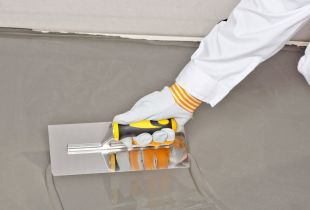 Leveling the floor: technology features
Leveling the floor: technology features
During repairs in the house, it is important to know how to level the floor in it. To do this, you should familiarize yourself with the recommendations of professionals, so that the flooring serves for many years.
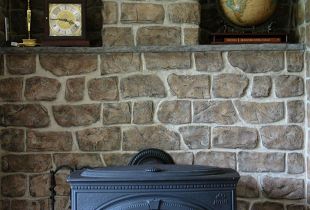 Stone stucco: a variety of shapes and textures (25 photos)
Stone stucco: a variety of shapes and textures (25 photos)
Masonry is always associated with safety and nobility. The use of artificial and natural stone is a laborious and expensive process. The best alternative to which is considered decorative stucco under a stone. The variety of shapes and textures ...
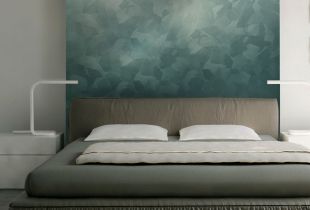 Venetian stucco in the interior - Italian chic (24 photos)
Venetian stucco in the interior - Italian chic (24 photos)
Venetian stucco is far from a new style in wall decoration, but every year its popularity is growing. This type of finish, thanks to its neutral appearance, is perfect for ...
 Marble decorative stucco - antique motifs in the interior (27 photos)
Marble decorative stucco - antique motifs in the interior (27 photos)
What is marble decorative plaster, and how does it differ from other finishing materials? Where can I use marble plaster? Advantages and disadvantages, do-it-yourself surface finishes.

 Acrylic plaster: affordable beauty and durability (20 photos)
Acrylic plaster: affordable beauty and durability (20 photos) American Plaster: essence, application possibilities and application technology (20 photos)
American Plaster: essence, application possibilities and application technology (20 photos) Warm plaster: on guard of warmth and comfort (24 photos)
Warm plaster: on guard of warmth and comfort (24 photos) Advantages and possibilities of using Marmorino plaster (21 photos)
Advantages and possibilities of using Marmorino plaster (21 photos) Decorative plaster in the corridor: available application techniques (20 photos)
Decorative plaster in the corridor: available application techniques (20 photos) DIY whitewashing of the ceiling: technology features
DIY whitewashing of the ceiling: technology features Leveling the floor: technology features
Leveling the floor: technology features Stone stucco: a variety of shapes and textures (25 photos)
Stone stucco: a variety of shapes and textures (25 photos) Venetian stucco in the interior - Italian chic (24 photos)
Venetian stucco in the interior - Italian chic (24 photos) Marble decorative stucco - antique motifs in the interior (27 photos)
Marble decorative stucco - antique motifs in the interior (27 photos)
